by Áine Finegan, former Research and Reference Team Student
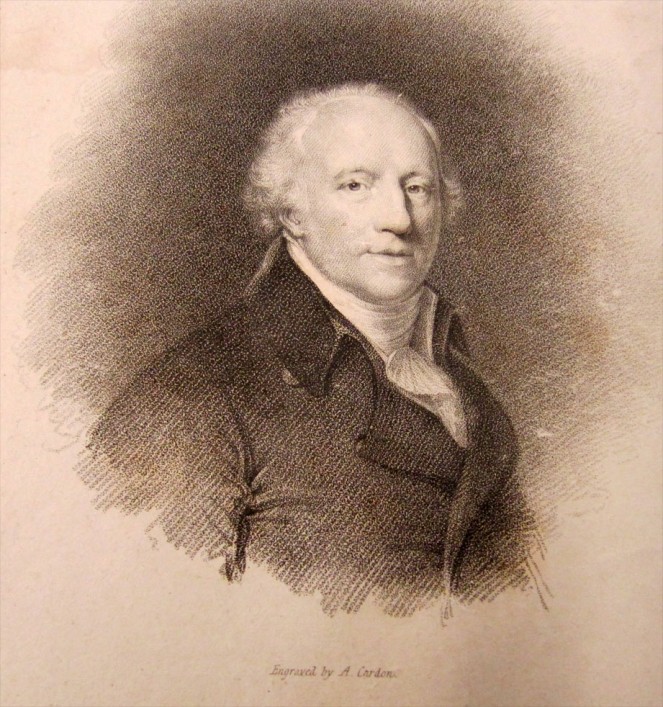
Richard Lovell Edgeworth, 1812. Engraving by Antoine Cardon. NLI ref. EP EDGE RI (1A) I
As the City of Science for 2012, Dublin is playing host to all things scientific this year and here at the National Library we're embracing this with a new science-themed exhibition at 2/3 Kildare Street - Particles of the Past. This exhibition is all about uncovering the scientific treasures of the NLI and I experienced this myself by learning about the inventor Richard Lovell Edgeworth. Although in the end there was no room for the innovative Mr. Edgeworth in the Particles of the Past exhibition, I wanted to share the story of this fascinating man with our NLI Blog readers. Prior to researching this post, for me Richard Edgeworth was merely the father of the author Maria Edgeworth (author of Castle Rackrent, one of the first ‘Big House’ Anglo-Irish novels). Not as well known to us today as Maria, Richard was actually an important man in his day who was simultaneously engaged in the worlds of science, manufacture and literature. An inventor and pioneer, he sustained a life-long passion for scientific discovery and for using advancements to improve everyday life, particularly on his Longford estate in Edgeworthstown.
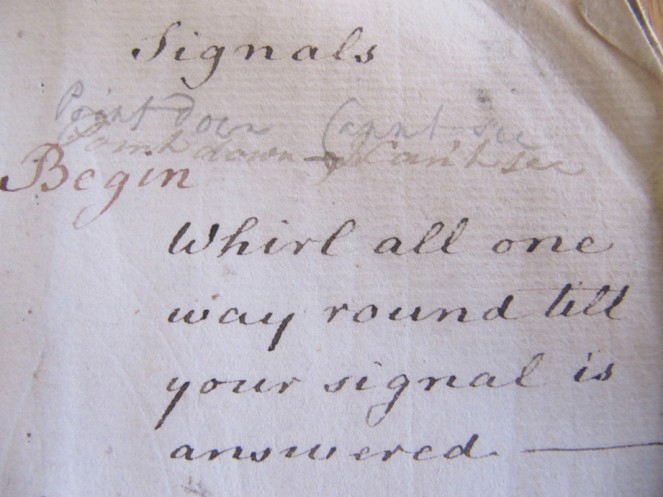
Edgeworth's telegraphy instructions for beginning your communication - Whirl all one way round till your signal is answered. NLI ref. Ms. 7393
Born in 1744, Richard was seven years old when his scientific curiosity was awakened by a Mr. Deane, who presented Edgeworth’s mother with an electrical machine in the hopes that it would aid her in overcoming the palsy she had suffered since she gave birth to her son. The machine failed to work on one occasion and Mr. Deane was unable to discover the problem. Young Edgeworth noticed that the wire used to conduct the electrical fluid was being obstructed and pointed it out to Mr. Deane, “who was so well pleased with my observation, that he took me up in his arms, kissed me, and invited me to come the next morning to see his study and workshop”. This encounter and subsequent visit to the workshop awakened Richard’s scientific curiosity and it proved to be a lifelong passion.
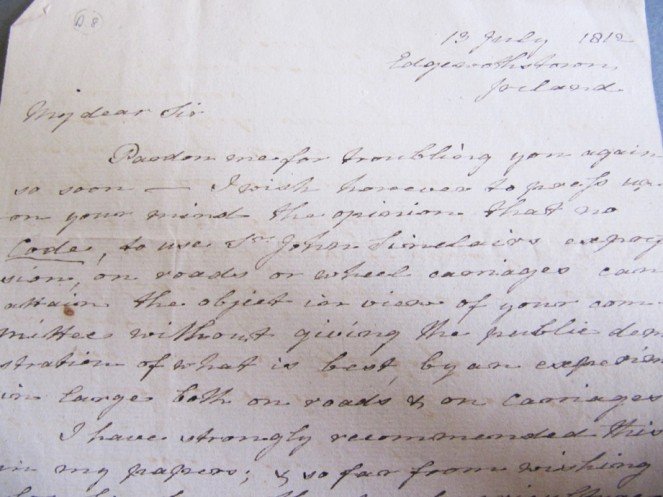
Letter from Richard Edgeworth to a Mr. Giddy about wheel carriages, written from Edgeworthstown on Monday, 13 July 1812. NLI ref. Ms. 11,132 (4)
Doctor Erasmus Darwin (grandfather of Charles) inspired Richard Edgeworth to dabble in coach-making, which eventually led to the publication of An essay on the construction of roads and carriages in 1813. This interest in coach travel and transport persisted throughout his life and he was constantly adapting vehicles to enhance their capabilities. Edgeworth’s aim of improving the safety and comfort of journeys by horse and carriage naturally led to his attention being turned to roads, a common preoccupation of the age. His book advocated that government money should be used to plan, map and improve roads in order to support the transfer of goods between manufacturing centres (the Industrial Revolution being in full swing).
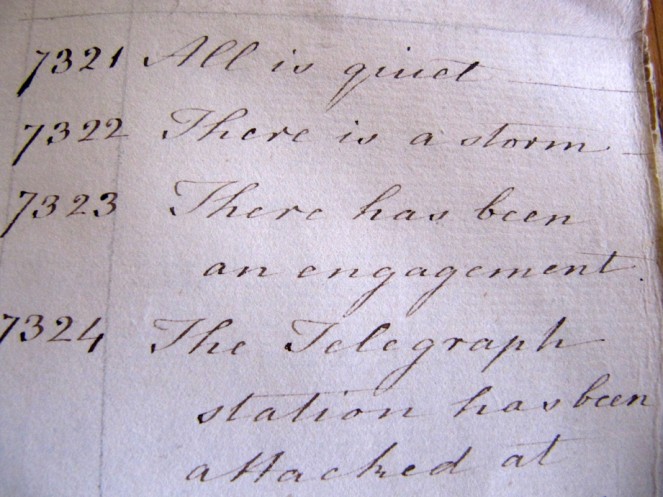
Edgeworth's telegraphy code for stock answers that would be regularly used. NLI ref. Ms. 7393
In 1768 he devised a system to relay information in a way which “did not depend upon the fleetness or strength of horses”, namely the telegraph, some twenty years before its reputed invention by Claude Chappe in 1794. Prompted by the threat of a French invasion of Ireland in 1794, Edgeworth later revived his invention and proposed its adoption across Ireland to the Lord Lieutenant. He argued that the ability to communicate quickly across the country in the event that the French landed would be a huge asset, but also believed that it would have uses in commerce as well as for the military. Unfortunately for Edgeworth, the Lord Lieutenant expressed little interest in the scheme and Edgeworth resigned himself to dropping his plans.
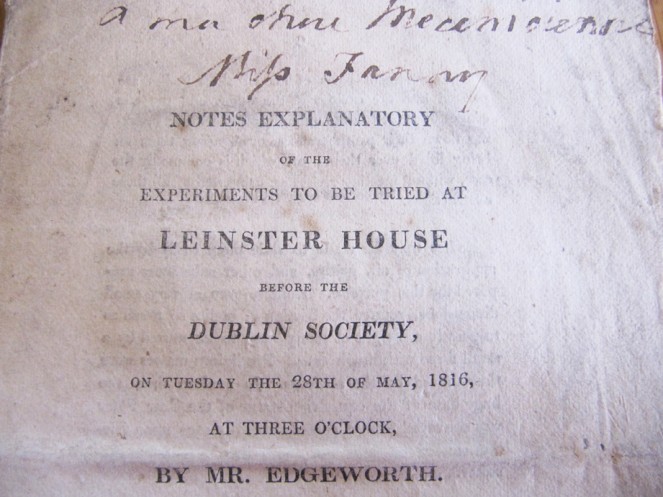
Notes explanatory of the Experiments to be tried at Leinster House before the Dublin Society on Tuesday the 28th of May, 1816, at three o'clock, by Mr. Edgeworth. NLI ref. Ms. 11,132
Edgeworth became an avid reader of scientific works after realising that “invention must be grievously wasted, where there is not a competent knowledge of what has been previously done by others”. He suffered the painful realisation that many of his creations which “had appeared to me new, and entirely my own, had been printed a hundred years ago”. This revelation did not deter him and spurred him on in his exploration and innovation, such as the creation of new agricultural machinery for his estate. Edgeworth himself was faced with plagiarism of his work, including a person who “presented my perambulator, without any change in its construction, as his own invention, to the Dublin Society”.
Edgeworth’s ingenuity continued with the design of a machine which would enable a man to “walk faster than any other person”, but unfortunately it was destroyed by mischievous local boys, who were unable to resist the temptation of the “giant wheel” and crashed it into a chalk-pit. However Edgeworth was no mere eccentric inventor, as he was also intent on being an ‘improving landlord’ who did his best for his tenants, such as improving their cabins by adding chimneys and windows. He was also an innovator in the area of education and embraced Enlightenment ideals of educational principles, publishing extensively on the topic with his daughter Maria. Additionally he found time to involve himself in Maria’s writing, but those are stories for another day.
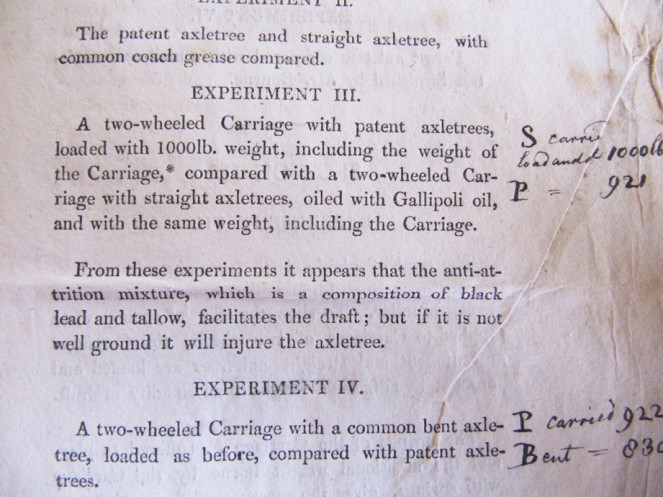
Richard Edgeworth's third experiment carried out before the Dublin Society at Leinster House at 3pm on Tuesday, 28 May 1816. NLI ref. Ms. 11,132
For more information on the ingenious Mr. Edgeworth and his family, you can explore our Edgeworth Papers collection list or search our catalogue for fascinating reads. For our non-local readers, why not peruse Richard Lovell Edgeworth's memoirs, which have been digitised and are freely available online via our catalogue (just click on any one of the Google Preview, Open Library or Haithi Trust icons).
